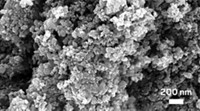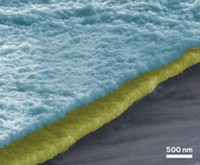Advertisement
Grab your lab coat. Let's get started
Welcome!
Welcome!
Create an account below to get 6 C&EN articles per month, receive newsletters and more - all free.
It seems this is your first time logging in online. Please enter the following information to continue.
As an ACS member you automatically get access to this site. All we need is few more details to create your reading experience.
Not you? Sign in with a different account.
Not you? Sign in with a different account.
ERROR 1
ERROR 1
ERROR 2
ERROR 2
ERROR 2
ERROR 2
ERROR 2
Password and Confirm password must match.
If you have an ACS member number, please enter it here so we can link this account to your membership. (optional)
ERROR 2
ACS values your privacy. By submitting your information, you are gaining access to C&EN and subscribing to our weekly newsletter. We use the information you provide to make your reading experience better, and we will never sell your data to third party members.
Energy
Lithium-Air Batteries With More Oomph
Electrochemistry: Modifying the electrode and electrolyte leads to a battery that cycles by forming and decomposing lithium hydroxide, not lithium peroxide
by Mitch Jacoby
November 2, 2015
| A version of this story appeared in
Volume 93, Issue 43
By overhauling the guts of a lithium-air battery, researchers in England have come up with a higher performance design that may help move the battery from research labs to consumer products (Science 2015, DOI: 10.1126/science.aac7730). Lithium-air batteries, which draw oxygen from the air to drive battery chemistry, pack roughly 10 times as much energy per weight as lithium-ion batteries. But they operate sluggishly and fail quickly as a result of the electrochemistry products, mainly Li2O2, that form during battery use. Li2O2 tends to form crystals about 2 μm in diameter that clog standard porous carbon electrodes, which reduces charge capacity. Li2O2 also resists decomposition during charging, requiring energy-wasting high voltages to reverse the electrochemistry. Aiming to improve on those limitations, University of Cambridge chemists Tao Liu and Clare P. Grey and coworkers prepared graphene-based electrodes with large pores and added a redox mediator, lithium iodide, to the electrolyte solution. The new battery reversibly forms large LiOH crystals, about 15 μm in diameter, which fill but don’t plug the electrode pores and decompose at low voltage, boosting charge capacity and battery lifetime.





Join the conversation
Contact the reporter
Submit a Letter to the Editor for publication
Engage with us on Twitter